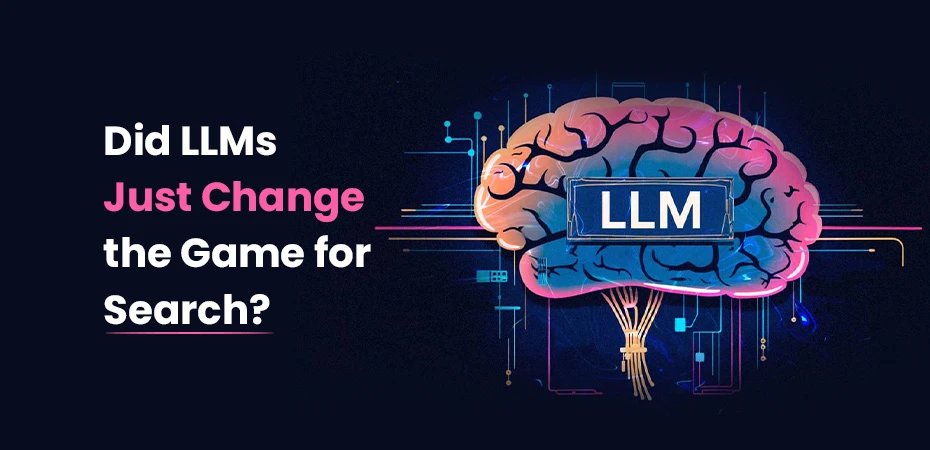Why LLMs Are Changing the Game
In 2024, most teams building digital products are still asking the wrong questions. They ask: what features should we ship next? How do we acquire more users? How do we compete with X? But in the age of AI-native infrastructure, there’s a sharper question to ask first: how is user behavior shifting in an LLM-shaped app economy?
For any serious mobile app development company in Austin or beyond, the ground is already shifting. Users expect immediacy, personalization, and smart responses without needing to click through menus. If your app can’t predict, remember, and assist with context, it won’t survive.
The Shift: From Tasks to Intent
Most apps until now were task-driven. You opened them to do something specific—book a ride, track your sleep, order food. LLMs flip that. The best new apps don’t wait for user input; they anticipate it. They act more like intelligent collaborators than static tools.
Think about what that means for UI. Drop-downs, search fields, endless onboarding prompts. These were built for structured systems. But LLMs invite unstructured input. You type a question in natural language and expect a useful answer. No training required. This subtle shift is seismic. It changes how people judge usefulness. It changes how often they return.
What LLM-Native Means (And Doesn’t)
Let’s get clear: slapping ChatGPT into an app isn’t an AI strategy. LLM-native apps aren’t just chatbots in different skins. They use models to rethink workflows altogether. In LLM-native calendars, events write themselves. In LLM-native email, responses draft before you even click ‘reply.’ In LLM-native health apps, symptom checkers are replaced with adaptive care plans that evolve as the patient does.
LLMs give teams a superpower. But they also raise the bar.
The New Table Stakes
- Personalization That Feels Human
Not “Hello, John” personalization. Real personalization. Like remembering that you prefer PDF exports over Excel. Or that you book flights in the evening. LLMs let your app learn these things passively without surveys or settings screens. - Contextual Memory
Forget history logs. LLM-powered memory means knowing where the user left off, why they came, and what they might need next. That’s not science fiction. That’s already here in top-tier productivity tools. - Language As Interface
We’re past point-and-click. Text and voice are fast becoming the new interface standard. That doesn’t mean your app needs to chat. It means users should be able to speak or type what they want and get meaningful action.
Your Stack Isn’t Ready (Yet)
Here’s where it gets real. Most teams aren’t structurally ready to build LLM-native apps. They’re still using rigid templates, rule-based engines, and outdated product timelines.
Teams that thrive in this new era do three things differently:
- They prototype with real user language early. If your user has to guess how to use your app, it’s already failing.
- They train on domain-specific data. Generic models are great. Fine-tuned ones are better. The best teams don’t wait for OpenAI. They build their own data flywheels.
- They architect for adaptability. AI-native apps aren’t static. They evolve with use. If your infrastructure can’t adapt, your product can’t either.
Feature Sets That Actually Matter Now
Some of the most expensive parts of app dev are no longer necessary. Forms, filters, and menu systems are being replaced with smart prompts, background decision engines, and dynamic output modules. This doesn’t just shift how products look. It changes what’s worth building.
So where should dev teams focus?
- Data fluency: Does your app pull the right data into the model at the right time?
- Interaction flow: Can the user go from idea to outcome in a single step?
- Trust: Does the model explain why it’s doing what it’s doing?
These questions are bigger than UX. They’re strategic. If your app doesn’t help users move faster, think sharper, or act more decisively, it’s noise.
Don’t Confuse Automation with Intelligence
A lot of teams are still caught up automating checklists. But automation ≠ intelligence. LLMs do more than execute, they reason. The future isn’t about apps that complete your task faster. It’s about apps that complete the task you didn’t know you needed yet.
Take onboarding. Most apps still ask users to fill out forms, select goals, and check boxes. A smarter app lets the user just say, “I want to lose weight before my sister’s wedding,” and builds a plan without needing 10 more screens.
That’s what users expect now, even if they can’t articulate it. Teams that anticipate this will win. Those who keep treating AI like a bolt-on widget will fade.
AI Isn’t a Feature. It’s a Frame.
The biggest mental trap is thinking of AI as a thing you add to a product. Like dark mode or push notifications. But LLMs are more like electricity. They shift what’s possible entirely.
Ask yourself:
- If we built this product from scratch today, would we still need buttons X, Y, and Z?
- If our app could understand user intent perfectly, how much of our current UX would be unnecessary?
- What parts of our product are just compensating for what the tech can’t do yet?
This is where strategy meets design. And where most companies fall behind.
The Build Trap: Why Many Apps Will Miss the Moment
Even teams that recognize this shift often fall into the same trap: building what’s familiar. Because it’s safer. Because stakeholders expect wireframes. Because timelines reward output, not outcomes.
But the most successful apps of 2025 won’t be the ones with the longest feature list. They’ll be the ones with the smartest default behaviors. LLMs give you a shortcut to that, but only if your product team is ready to rethink what building means.
It’s no longer about what your app does. It’s about what it decides to do at the moment.
From Code to Conversation
The teams that win in this new era understand one thing deeply: we’re moving from code to conversation. The interface is no longer a set of screens. It’s an exchange.
That’s not just a UI insight. It’s a business one. It affects data structure, system design, feedback loops, and even pricing models. Apps that charge per user may start charging per decision. Apps that used to sell tools may become services.
If you’re an android app development agency watching this unfold, the message is clear: users will judge apps based on how well they “get” them. Not how many screens they have. Not how pretty the buttons look. Not how many integrations sit in the settings tab.
So What Should You Do Right Now?
Here’s a short list:
- Start prototyping with AI, not adding it after. Design with model behavior in mind from day one.
- Revisit every workflow. If your app guides users instead of responding to them, you’re losing ground.
- Look at your data. If you aren’t using it to drive decisions in-app, you’re sitting on wasted gold.
- Invest in product thinking, not just code. The best app development today starts with behavior modeling.
LLMs are forcing a rewrite,not of code, but of assumptions. That’s where the opportunity is.
Wrapping it Up!
Apps used to be digital versions of things, including calendars, calculators, and filing cabinets. That era is ending. The next generation of mobile products will think with you, not for you.
The sooner teams understand that shift, the better their odds.
Those still chasing yesterday’s metrics and copying yesterday’s UI patterns will fall behind. But the few who build apps that behave like smart, silent collaborators? They’ll own the next decade.
That’s why LLMs aren’t just another tool in the stack. They’re the new foundation

